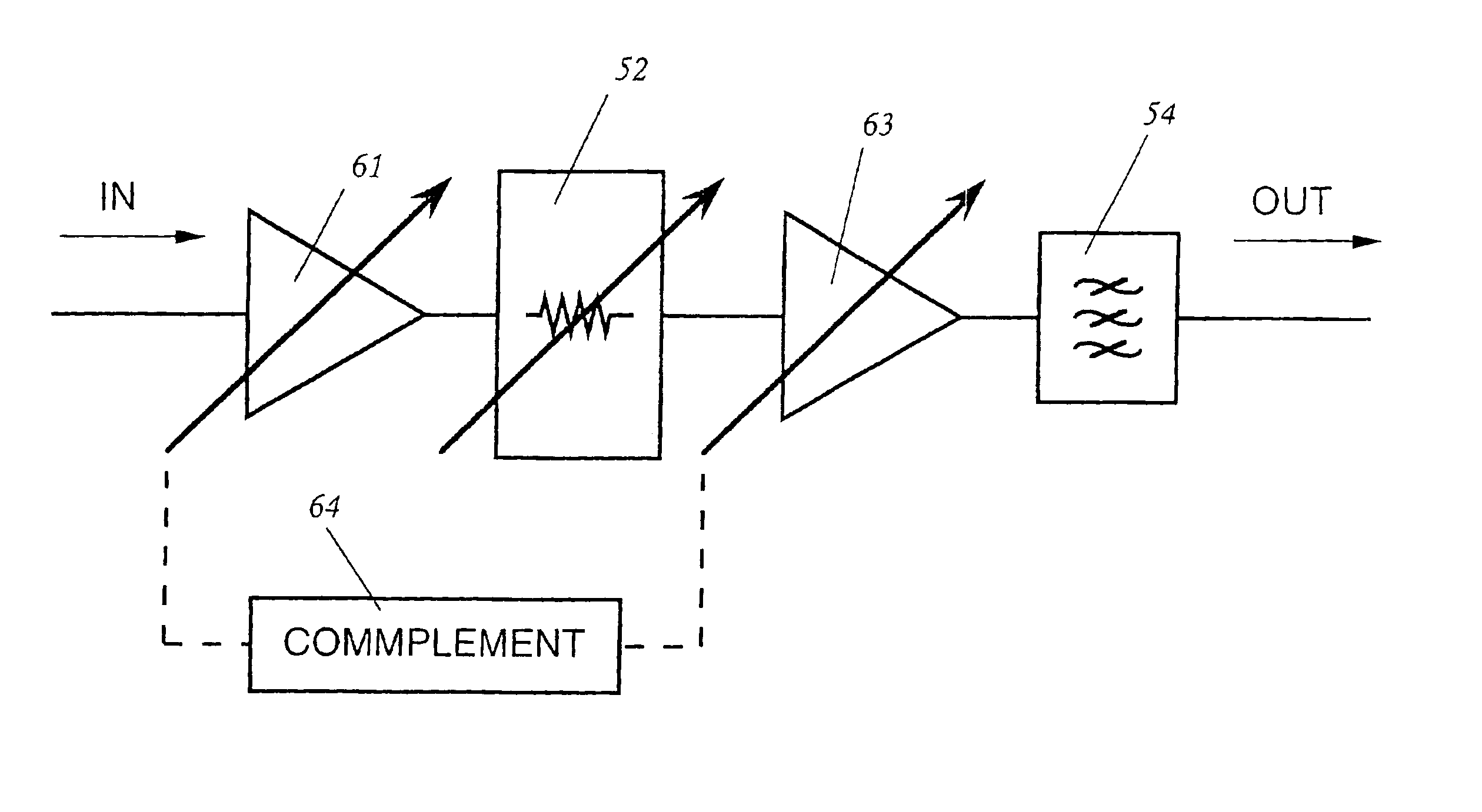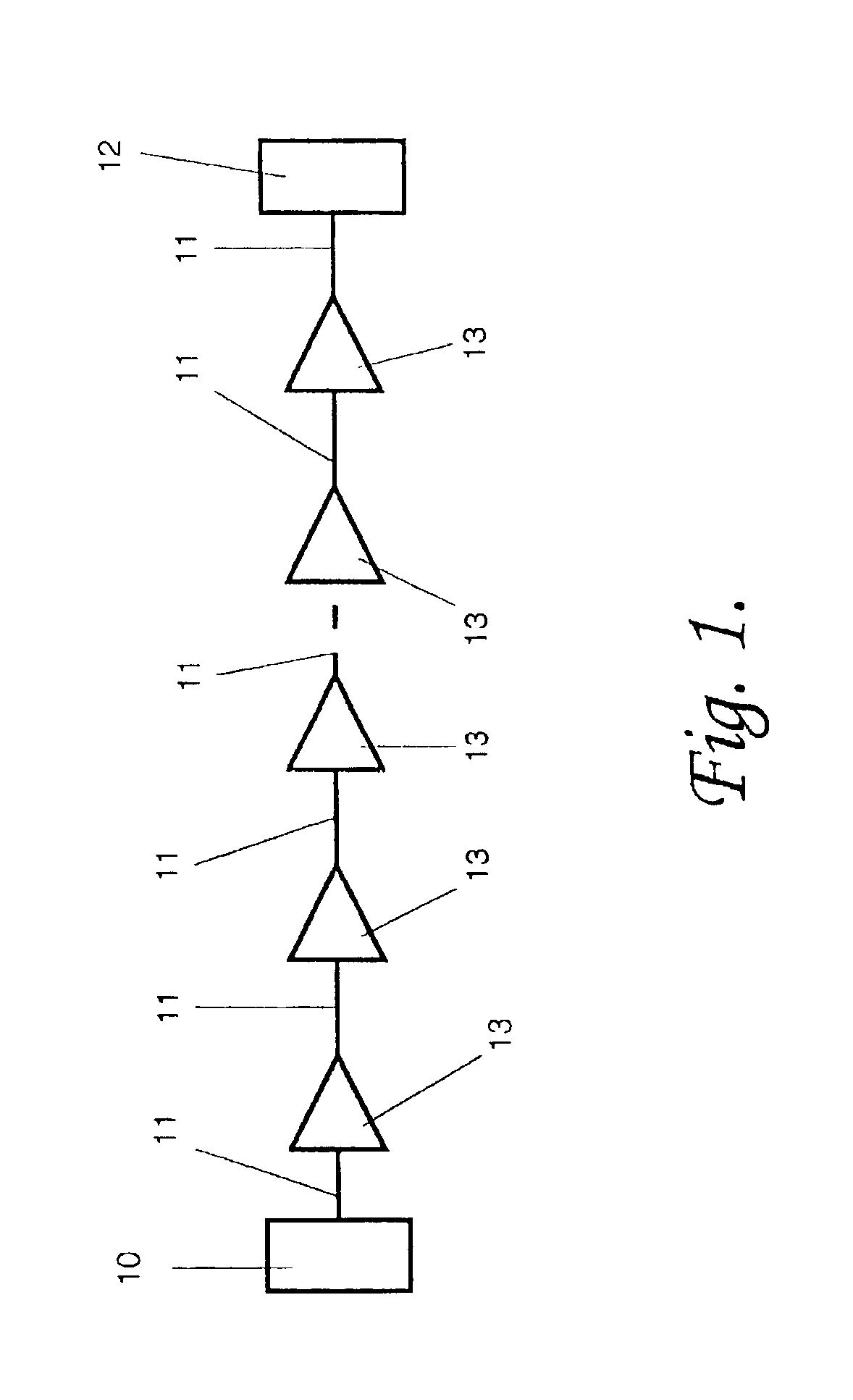Optical amplifier modules
- Summary
- Abstract
- Description
- Claims
- Application Information
AI Technical Summary
Benefits of technology
Problems solved by technology
Method used
Image
Examples
Embodiment Construction
[0019]The transmission system of FIG. 1 comprises a WDM transmitter 10 typically arranged to launch a plurality of optical signals that are wavelength division multiplexed into one end of an optical fibre transmission path 11. At the far end of this path these signals are detected by a WDM receiver 12. At spaced intervals along the transmission path 11 are inserted a set of optical amplifier modules 13. Each optical amplifier module 13 includes at least one optical gain providing optically pumped rare-earth doped optical fibre amplifier.
[0020]The basic elements of a first preferred form of an amplifier module 13 of FIG. 1 is depicted in FIG. 2, and comprises a fixed gain rare-earth doped optical waveguide optical amplifier 21 and an electronically controllable variable attenuation optical attenuator 22. FIG. 2 shows the attenuator 22 located downstream of the amplifier 21, but alternatively it may be located upstream of it. Additionally the modulator 13 typically includes a passive ...
PUM
 Login to View More
Login to View More Abstract
Description
Claims
Application Information
 Login to View More
Login to View More - R&D
- Intellectual Property
- Life Sciences
- Materials
- Tech Scout
- Unparalleled Data Quality
- Higher Quality Content
- 60% Fewer Hallucinations
Browse by: Latest US Patents, China's latest patents, Technical Efficacy Thesaurus, Application Domain, Technology Topic, Popular Technical Reports.
© 2025 PatSnap. All rights reserved.Legal|Privacy policy|Modern Slavery Act Transparency Statement|Sitemap|About US| Contact US: help@patsnap.com



